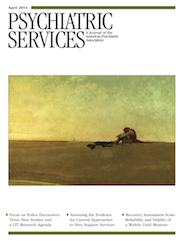Identifying Young Adults at Risk of Medicaid Enrollment Lapses After Inpatient Mental Health Treatment
Abstract
Objective
This study sought to describe Medicaid disenrollment rates and risk factors among young adults after discharge from inpatient psychiatric treatment.
Methods
The sample included 1,176 Medicaid-enrolled young adults ages 18 to 26 discharged from inpatient psychiatric care in a mid-Atlantic state. Medicaid disenrollment in the 365 days postdischarge and disenrollment predictors from the 180-day predischarge period (antecedent period) were identified from administrative records. Classification and regression tree and probit regression analysis were used.
Results
Thirty-two percent were disenrolled from Medicaid within a year of discharge. Both analytical approaches converged on four main risk factors: being in the Medicaid enrollment category for persons with a nondisabled low-income parent or for a child in a low-income household, being age 18 or 20 at discharge, having a Medicaid enrollment gap in the antecedent period, and having no primary care utilization in the antecedent period. For the 48% of the sample continuously enrolled in the antecedent period who were in the enrollment categories for disabled adults or foster care children, the disenrollment rate was 13%.
Conclusions
A substantial minority of Medicaid-enrolled young adults discharged from inpatient care were disenrolled from Medicaid within a year. About half the sample had a low disenrollment risk, but the other half was at substantial risk. Risk factors largely reflected legal status changes that occur among these transition-age youths. Identifying inpatients at high risk of disenrollment and ensuring continuous coverage should improve access to needed postdischarge supports. Regular primary care visits may also help reduce unintended Medicaid disenrollment in this population.



